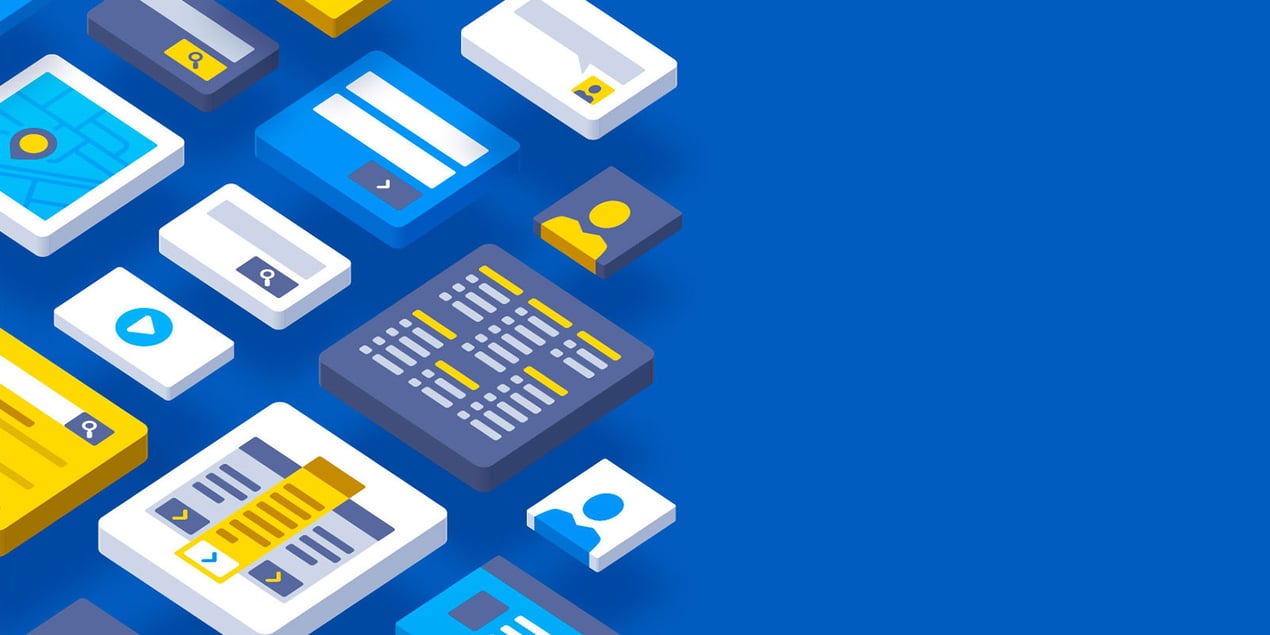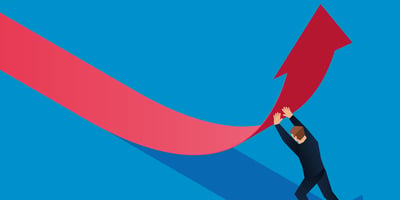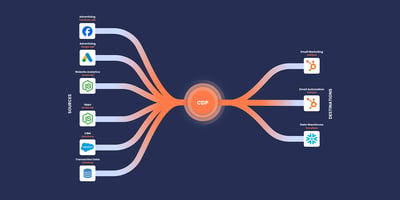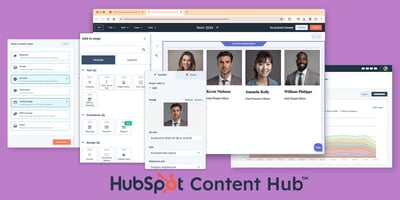Building an effective business website is more than just creating a beautiful design. The flow of content needs to be structured in a way that strategically guides your target audience, builds trust, and ultimately drives action.
Additionally, each business website consists of a core set of pages that serve a specific purpose. Regardless of whether you are a small business or a large multinational corporation, your business website needs these pages.
Your Home page welcomes your target audience and communicates your key value proposition. The Service pages contain detailed features and benefits related to your services, whereas your About page is geared toward fostering connection with your target audience. Furthermore, your Blog page acts as a hub for sharing insights and establishing authority, while the Contact page is a vital touchpoint for your visitors.
In this article, I’ll highlight best practices for structuring these 5 key pages of your website to ensure that they deliver a seamless user experience and align with your business goals.
I have included a selection of our own wireframes and end product business websites to further illustrate the content structuring best practices.
So if you are looking to better showcase your company’s expertise or improve user interaction, these guidelines will help you create a website that not only looks great, but also functions as an effective tool for growth.
The Home page
The home page typically receives the majority of your website’s traffic and is often the first page that your target audience encounters on your website. As users generally decide in less than 60 seconds whether to continue browsing or leave the website, it is essential that the home page immediately captures their attention.
.png?width=1000&height=4085&name=01%20MO%20Agency%20-%20Website%20Structure%20%26%20Content%20Flow%20-%20Home%20v2%20(02Sep2024).png)
The following breakdown highlights how each section should be crafted to build credibility, communicate your value proposition, and guide users toward taking desired actions.
1. Hero banner
The hero banner is the first thing your target audience sees when they land on your business website. It should clearly convey your key value proposition in a way that grabs their attention and makes them want to learn more.
You should therefore craft an impactful headline and a supporting subheading to succinctly explain what you offer and why it matters. Pair this with a high-quality image or video that represents your brand and resonates with your target audience.

2. Trust factors
Trust factors are crucial for establishing credibility and reinforcing your key value proposition. Highlight any significant awards, ratings, industry certifications, notable partnerships, or impressive statistics that bolster your business’ credibility. Display these trust signals prominently to reassure your target audience of your quality.
3. Services/Products overview
Your target audience should be able to quickly grasp what your business offers. Thus, provide a concise overview of your key services or products by using short descriptions and clear visuals to make the section easy to skim-read.
These descriptions should briefly explain what the service or product entails and how it can benefit your target audience. Lastly, a clear Call-To-Action (CTA) should be included to guide the user to a detailed service or product page where they can learn more about it.

4. Company overview
A company overview helps to humanise your brand and provide some contextual information about your company. Explain who you are, what you do, and why you do it.
Focus on providing the target audience with some insight into your purpose and values. This section should be short and impactful. It should contain enough information to pique the reader’s interest, but not too much so that it becomes overwhelming and distracting.
5. Brand benefits
Outline the general benefits of your offerings to help your target audience understand why they should choose your business over the competitors. Specify how your services or products solve common problems or meet specific needs.
Use bullet points, icons, or a brand-centric design element to make this information easy to digest, and ensure each point is directly relevant to your target audience.
6. Social proof
Social proof is a powerful tool for building trust. Include testimonials from satisfied customers, logos from well-known clients that you’ve worked with, and case studies that highlight successful projects. These elements provide tangible evidence of your capabilities and help potential customers feel more confident in choosing your business.

7. Call-To-Action (CTA) banner
A visually impactful CTA is essential for guiding visitors towards conversion. Traditionally this is in the form of a banner that is disguishable from the rest of the design up until this point on the webpage.
The CTA should clearly state what the user will gain by taking action, whether it’s contacting you, requesting a quote, downloading a resource, or learning more about your offerings.
8. Blogs/Case studies preview
By providing blog posts, company news, or case studies you can keep your target audience engaged and further demonstrate your expertise. Highlight popular resources that are specifically relevant to your target audience’s interests and needs. This not only adds additional value, but also helps to position your business as a thought leader in your industry.
Service/Product pages
The service/product page provides detailed information about what you offer and convincing your target audience of its value. This page should be structured to clearly communicate the features and benefits of your service or product and building trust through social proof.
The goal is to strategically guide the visitors through the information so that they quickly understand the value of your offering and are motivated to engage further.
.png?width=1000&height=3380&name=02%20MO%20Agency%20-%20Website%20Structure%20%26%20Content%20Flow%20-%20Service%20v2%20(02Sep2024).png)
1. Hero banner
Each service page should start with a hero banner that clearly communicates the service’s value proposition. Create a headline and subheading that quickly explains what the service is and why it’s valuable to your target audience. An engaging image or video can help illustrate the service and draw the user in.
2. Service/Product overview
Provide an overview of the service or product by focusing on the most important aspects that potential customers need to know. Be cautious of including too much information in this section. It should contain the most important details, but still be concise. Use clear headings and short paragraphs to make the content easy to read.

3. Service/Product features
List the key features of your service or product to give your target audience a quick understanding of its specific value. Include a short description of each feature to elaborate on how it adds value or solves a particular problem.
Use bullet points, icons, or brand-centric design elements to make this section visually appealing and easy to skim-read.
4. Service/Product benefits
Explain the benefits of your service or product in terms of the positive impact it can have on the customer. Focus on addressing common pain points and demonstrating how your offering can make a difference.
Present this information in a summarised fashion to ensure that the key benefits are instantly understood by the target audience.

5. Social Proof
Include client testimonials, case studies, and a list of well-known clients that are specific to the service or product. These elements provide evidence of your expertise related to the respective service. By highlighting client success stories you can reassure your target audience that your business is reliable and valuable.
6. CTA banner or Contact form
End the service page with a clear and compelling CTA that encourages visitors to take the next step. This could be a button to request a demo, contact you, or make a purchase.
Alternatively, include a simple contact form if appropriate. However, ensure that the required fields are kept to a minimum to avoid deterring potential leads.

7. Additional sections (If applicable)
Ideally, by the end of the service page, you should have answered your target audience’s queries sufficiently for them to proceed to the conversion point. However, if you need to provide additional clarification and value the following sections can be considered.
7.1 Frequently Asked Questions (FAQ)
If you are offering a very technical service or product that requires detailed clarification, consider the inclusion of a FAQ section.
But be very cautious of overwhelming your target audience with too much content. It is often better to keep FAQs on a dedicated FAQ page where common queries can be neatly categorised.
This approach ensures that visitors find the information they need without detracting from the primary content flow.
7.2 Blog previews
If service or product-specific case studies are not available, consider including service or product-related blog posts. It is important to ensure that these posts are relevant and add value to the page.
Avoid including blog posts just for the sake of adding additional information on the page. If the content doesn't serve a strategic purpose, it’s better to omit it to prevent overwhelming the user with unnecessary information.
About page
The About page is a vital component of a business website, offering a broad overview of your company and the people behind it. This is where you tell your company’s story, sharing who you are, what you do, and why you do it.
It’s an opportunity to build trust, establish credibility, and create a personal connection with your audience. Ultimately, the goal is to leave a lasting impression that encourages your target audience to engage further with your brand.
.png?width=1000&height=4525&name=03%20MO%20Agency%20-%20Website%20Structure%20%26%20Content%20Flow%20-%20About%20v2%20(02Sep2024).png)
1. Hero banner
The hero banner on the About page should set the stage for your company’s story. It can be approached in two ways. Either keep the headline straightforward to confirm that this is an About page.
Or you can create a headline and subheading to provide a brief introduction to what makes your company unique. Include a relevant image or video to add a personal touch and make the page more engaging.
2. Company overview
Start with a company overview that explains who you are, what you do, and why you do it. The goal is to give your target audience a sense of what drives your business. Keep this section concise, but informative, providing enough detail to build interest.
3. Company history
Provide a brief history of your company by highlighting key milestones and achievements. Use a timeline format to make this section easy to follow and engaging. This can help establish credibility and show the progression of your business over time.

4. Values
Highlight your core values and explain how they influence your business operations and decision-making processes. This helps to establish a deeper connection with your target audience. Be specific about what these values mean in practice and how they benefit both your clients and employees.
5. Leadership team
Introduce key team members to help humanise your brand, build trust, and establish credibility. Include photos and short biographies that highlight their roles, expertise, and contributions to the company. This can help potential clients and partners feel more connected to your business.
6. Company culture
Showcase your company culture by highlighting what makes your work environment unique and attractive. This could include details about your office atmosphere, team activities, and any initiatives that promote a positive and inclusive workplace. Use photos and anecdotes to make this section engaging and relatable.

7. Trust Factors
Include a section for awards, recognitions, or certifications that reinforce your company’s reliability and expertise. This can further reassure visitors of your business’s quality and professionalism.
8. CTA Banner
Conclude the About page with a strong CTA that guides users to take the next step. This could be an invitation to contact you, join your team, or learn more about your services.
Blog page
The Blog page is a powerful tool for your business to establish authority in your industry, engage with your audience, and drive organic traffic to your website.
Depending on your company's size and resources, your content strategy might expand into a broader Resources section that not only includes blogs, but also case studies, videos, and gated content like eBooks or white papers.
However, if you're starting small or have limited resources, focusing on a well-structured blog page is an excellent first step.
.png?width=1000&height=3087&name=04%20MO%20Agency%20-%20Website%20Structure%20%26%20Content%20Flow%20-%20Blog%20v2%20(02Sep2024).png)
1. Hero banner
The hero banner on your blog page should set the tone and provide an introduction to your blog’s purpose. Use a headline and subheading to explain what readers can expect to find, supported by a relevant image or video that captures the essence of your blog content.
2. Category filter
To help users easily find relevant content, align your category tags with your services and focus your content creation in these areas. The categories should be simple and intuitive, ensuring that users can quickly navigate to the articles that interest them without getting lost in overly technical jargon.
3. List of articles
Organise your blog articles in a clean, grid structure that is easy to browse. Consider featuring one standout article at the top, followed by a grid of three articles per row for the rest. This layout should be visually appealing and allow users to quickly scan and find content that captures their interest.

4. Pagination
Ensure that users can easily navigate to older posts without hassle. Clear and simple pagination controls help keep readers engaged with your content for longer periods, allowing them to explore your blog's full depth.
5. CTA Banner
Include a CTA banner that encourages further engagement from your blog readers. This could prompt users to subscribe to your newsletter, read more articles, or contact you for more information. The CTA should be clear, compelling, and aligned with the needs of your audience.
Contact Page
The Contact page serves as the primary point of communication between you and your visitors. It’s where potential clients and partners go to connect with your business, whether they have inquiries, need support, or are ready to take the next step.
It’s therefore essential that your Contact page is clear, user-friendly, and ensures that visitors feel confident and supported when reaching out to your business.
.png?width=1000&height=1973&name=05%20MO%20Agency%20-%20Website%20Structure%20%26%20Content%20Flow%20-%20Contact%20v2%20(02Sep2024).png)
1. Hero banner
The hero banner on your contact page should clearly confirm that visitors are in the right place to get in touch with you. Use a headline and subheading to reinforce this, accompanied by a relevant image or video that aligns with your brand.

2. Contact Form
Include a simple, user-friendly contact form to facilitate easy communication. The form should have all the essential fields, but avoid overwhelming visitors with too many questions. Also, include a privacy disclaimer to reassure users that their information will be handled securely, and set clear expectations for response times.

3. Office locations
Provide clear information about your office locations, including maps with location pins, contact numbers, and business hours. This gives visitors alternative methods to reach you and helps those who prefer direct contact or visiting in person. Include any additional details that might be helpful, such as parking information or directions.
With over 30 locations, we built a tool for Mazda South Africa that allows the users to find their closest Mazda dealership.

Final Thoughts
Structuring the flow of content on key website pages is crucial for ensuring a positive user experience and achieving your business goals. By following the guidelines outlined in this article, you can effectively communicate your story, build trust, and encourage target audience engagement. Remember to keep your content to-the-point, accurate, and relevant to maximise the impact of your website.





